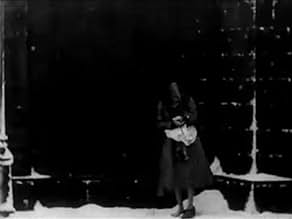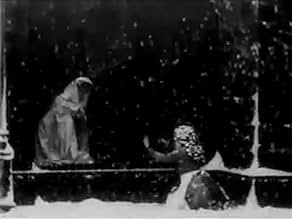I was taken aback by how saddening and powerful this little film, "The Little Match Seller"--a single shot film lasting little more than three minutes--from 1902 remains. It's directed by James Williamson, who was part of the so-called "Brighton School", which also included G.A. Smith, and was a hotbed for filmic innovation at the turn of the 20th Century. This film doesn't include their usual innovations in editing and camera positioning, but, rather, is something unique. Not for its special effects, which are multiple-exposure shots to project the Little Match Seller's visions on a wall. Smith had done that as far back as 1898, with "Santa Claus" and other films. The remarkable part of this film is the function of these visions within the narrative.
"The Little Match Seller", based on a fable by Hans Christian Anderson, is about a homeless child who sells matches at a building corner. To make it worse, it's cold and snowing; presumably, it's near Christmas, as indicated by her vision of a Christmas tree and the release date of the picture. Passersby ignore her, and a young boy throws snow at her and steals her last shoe. She lights matches partially for warmth, but also to create her visions, which include a fireplace and food--her inner wishes projected. Part of the power of this film is in how the girl's visions reflect cinema itself; they're projected images onto a blank screen lit by light. She is our projectionist as well as narrator of these films-within-a-film. The sad nature of the outer film adds to this power. The set, with convincing snow, and a stark minimalism adds to it. Moreover, the uncredited actress in the title role is wonderful; her performance makes this something special. I'd recommend this film to those who aren't even very interested in early cinema.



















